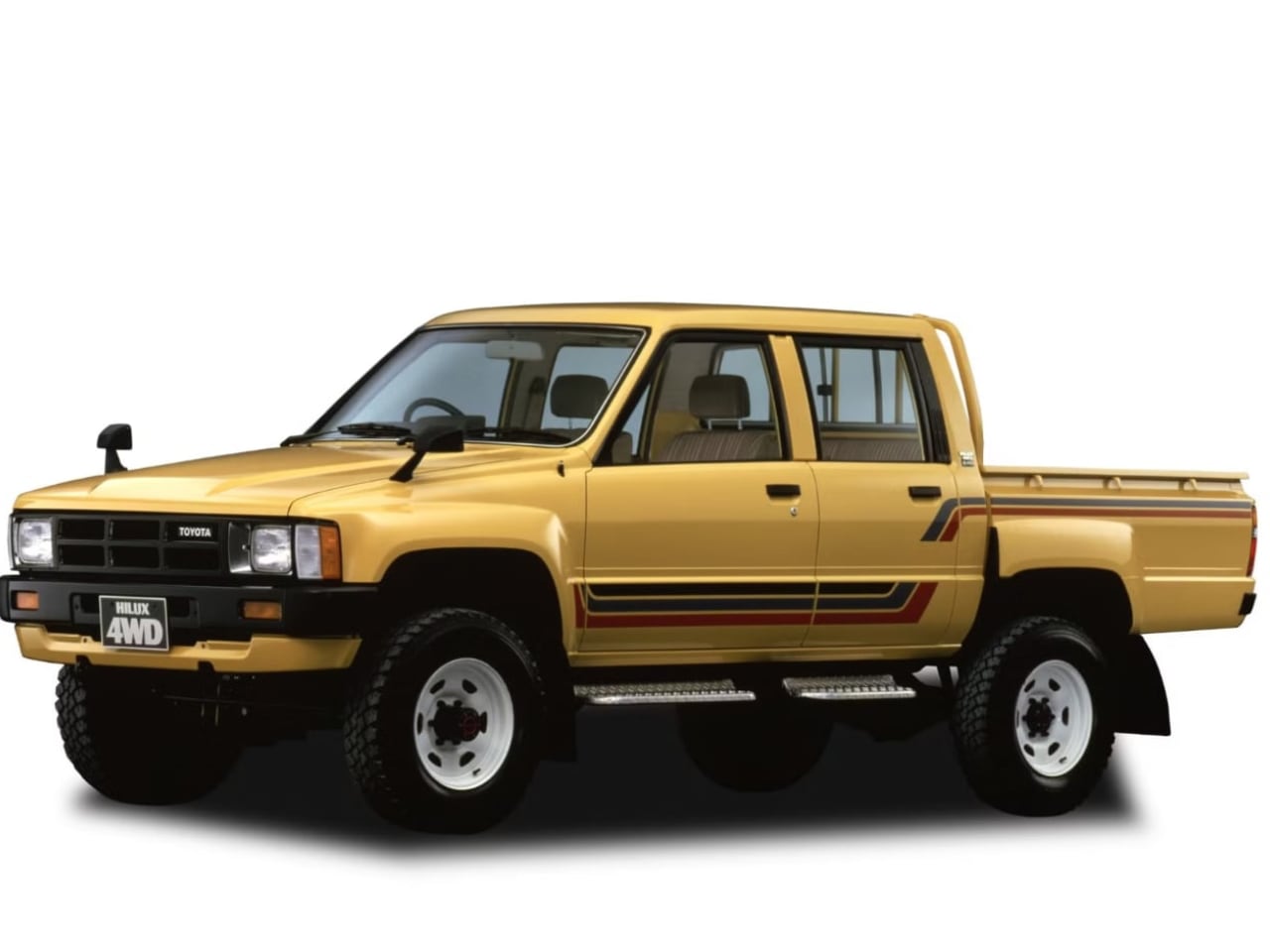Technology
Toyota’s Hilux Redefines Pickup Design with Functional Simplicity

The Toyota Hilux, designed in the 1980s, set itself apart from American pickup trucks through a commitment to functional simplicity. While competitors in Detroit focused on chrome embellishments and comfort features, Toyota’s design philosophy emphasized clear, utilitarian forms. This approach resulted in the Hilux becoming one of the best-selling pickup trucks, outselling American sports cars from 1983 to 1985 without any unnecessary decorative elements.
Design Philosophy Rooted in Functionality
In post-war Japan, industrial design was shaped by the understanding that resources were limited and space costly. The Hilux encapsulated these principles through its straightforward design. Its flat body panels and right angles contrasted sharply with the sculpted features of American trucks, which often relied on plastic cladding to mask structural elements. Instead, the Hilux proudly displayed its fasteners, reflecting a philosophy that valued structural integrity over superficiality.
The design choices made for the Hilux were not merely cost-saving measures; they were deliberate decisions that indicated a commitment to functional aesthetics. The vehicle’s cab-over-bed proportions rejected the long-hood designs favored in Detroit, prioritizing maneuverability and utility in its design. This approach meant that the Hilux was versatile enough to be effective in diverse environments, whether navigating the bustling streets of Tokyo or traversing the rugged Australian outback.
Simplicity and Repairability as Core Principles
The Hilux’s interior was designed with equal restraint. The dashboard featured only four essential gauges, and the steering wheel was wrapped in durable rubber, not luxury materials. This straightforwardness extended to the vehicle’s serviceability; every fastener was accessible using basic tools, and components could be replaced without specialized equipment. Such design choices created a vehicle that was not only easy to maintain but also capable of enduring the test of time.
Critics often dismissed the Hilux’s design as simplistic, but it was this very simplicity that allowed it to thrive across various markets. American trucks, with their focus on styling trends, frequently fell out of favor as tastes changed. In contrast, the Hilux’s timeless proportions and clear purpose resonated universally, making it a dependable choice for users around the globe.
The Hilux’s aesthetic identity was built on exposed rivets, visible welds, and functional stampings—elements that other manufacturers often tried to conceal. This transparency became a hallmark of its design, communicating its utility and maintainability without the need for elaborate marketing.
As the automotive industry faces increasing demands for sustainability and efficiency, the principles embodied by the Hilux are more relevant than ever. Electric vehicles, in particular, must address issues of weight and spatial efficiency, mirroring the design ethos established by Toyota decades ago.
By stripping away unnecessary features and prioritizing function, the Hilux offers a blueprint for modern automotive design. Instead of hiding battery components behind luxury materials, a contemporary Hilux-inspired design would showcase them, making repair and maintenance straightforward.
In an era where consumer expectations are shifting toward sustainability and efficiency, the Hilux’s legacy serves as a reminder that effective design does not require embellishment. It is about creating products that are functional, durable, and capable of adapting to real-world conditions.
Ultimately, the Toyota Hilux stands as a testament to the power of design rooted in practicality and straightforwardness. Its success is not just measured by sales figures but by its ability to meet human needs across diverse environments, making it a true industrial icon.
-

 Education3 months ago
Education3 months agoBrandon University’s Failed $5 Million Project Sparks Oversight Review
-

 Science4 months ago
Science4 months agoMicrosoft Confirms U.S. Law Overrules Canadian Data Sovereignty
-

 Lifestyle3 months ago
Lifestyle3 months agoWinnipeg Celebrates Culinary Creativity During Le Burger Week 2025
-

 Health4 months ago
Health4 months agoMontreal’s Groupe Marcelle Leads Canadian Cosmetic Industry Growth
-

 Science4 months ago
Science4 months agoTech Innovator Amandipp Singh Transforms Hiring for Disabled
-

 Technology4 months ago
Technology4 months agoDragon Ball: Sparking! Zero Launching on Switch and Switch 2 This November
-

 Education4 months ago
Education4 months agoRed River College Launches New Programs to Address Industry Needs
-

 Technology4 months ago
Technology4 months agoGoogle Pixel 10 Pro Fold Specs Unveiled Ahead of Launch
-

 Business3 months ago
Business3 months agoRocket Lab Reports Strong Q2 2025 Revenue Growth and Future Plans
-

 Technology2 months ago
Technology2 months agoDiscord Faces Serious Security Breach Affecting Millions
-

 Education4 months ago
Education4 months agoAlberta Teachers’ Strike: Potential Impacts on Students and Families
-

 Education4 months ago
Education4 months agoNew SĆIȺNEW̱ SṮEȽIṮḴEȽ Elementary Opens in Langford for 2025/2026 Year
-

 Science4 months ago
Science4 months agoChina’s Wukong Spacesuit Sets New Standard for AI in Space
-

 Business4 months ago
Business4 months agoBNA Brewing to Open New Bowling Alley in Downtown Penticton
-

 Business4 months ago
Business4 months agoNew Estimates Reveal ChatGPT-5 Energy Use Could Soar
-

 Technology4 months ago
Technology4 months agoWorld of Warcraft Players Buzz Over 19-Quest Bee Challenge
-

 Business4 months ago
Business4 months agoDawson City Residents Rally Around Buy Canadian Movement
-

 Technology4 months ago
Technology4 months agoFuture Entertainment Launches DDoD with Gameplay Trailer Showcase
-

 Technology2 months ago
Technology2 months agoHuawei MatePad 12X Redefines Tablet Experience for Professionals
-

 Top Stories3 months ago
Top Stories3 months agoBlue Jays Shift José Berríos to Bullpen Ahead of Playoffs
-

 Technology4 months ago
Technology4 months agoGlobal Launch of Ragnarok M: Classic Set for September 3, 2025
-

 Technology4 months ago
Technology4 months agoInnovative 140W GaN Travel Adapter Combines Power and Convenience
-

 Science4 months ago
Science4 months agoXi Labs Innovates with New AI Operating System Set for 2025 Launch
-

 Technology4 months ago
Technology4 months agoNew IDR01 Smart Ring Offers Advanced Sports Tracking for $169










